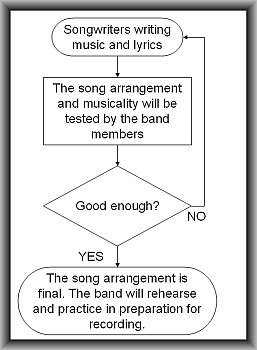Checklist#5: Do you have the copy of all track recordings in highest resolution?
Most recording studio is now equipped with a DAW (Digital audio workstation). This means that the recorded audio files are saved inside a computer in digital format (.WAV). During recording, there will be LOTS of files that are created and recorded such as the vocals, drums, guitars, bass, etc. The recording is usually done in 24-bit which are a standard format in most recording studios. You should have a copy of all these files.
If you are not very familiar with this, you can read this tutorial on bit depth and sample rate for recording projects. The bit depth should be 24-bits and you can verify this with Reaper (read step#2 of this tutorial, load each of the track waveforms to confirm) once you have the copy (placed either in DVD or USB hard drive) of all the recordings. The sample rate should be at least 44.1 KHz (or even higher). Make sure no effects are applied on every recorded track WAV files except for the sample complete mix.
This is what you need to have. Make sure the track file names are labeled properly so you will know the final version of the recorded track. #1 to #5 should have no effects applied to them directly to the waveform. Leave it as original and dry as possible.
1.) All vocal recordings
2.) All drum recordings
3.) Guitar tracks
4.) Bass
5.) Backup vocal tracks, overdubs, etc.
6.) Sample audio mix down of the project (done by the in-house engineer)
I would recommend that all WAV files of those recordings should be using the broadcast wave format with embedded “start offset” information. Why?
After the song will be recorded and mixed by the in-house audio mixing engineer; the band might realize that the song needs to be remixed again. Audio remixing can be useful for bands looking for the best sounding mix version of their song.
When remixing the tracks, the band needs to hire another audio mixing engineer. As a requirement, the band will provide all the recorded tracks to the new mixing engineer. The audio mixing engineer will assemble all of these tracks in DAW software.
To re-assemble the project in a different DAW, it needs to be synchronized with the rest of the tracks the way it was done in the original recording. This is where “start offset” is very useful as timing information. This will be the basis of the new mixing engineer to layout the project tracks in the DAW and to start mixing it. Without this information, it would be virtually impossible for any engineer to remix your project.
Checklist#6: Have you completely list the credits in the recording project?
It is important to document music production credits. The band will be required to give accurate credits to musicians and engineers present in the recording project. There are many reasons for this such as future royalty tracking or listing credits in the future album release.
This needs to be done in writing to avoid guesswork. Remember that some of the band members might quit and will be replaced. But it doesn’t mean that the old band member will be forgotten but still deserves full credits for any work done. Failing to list down proper credits can result to legal issues.
Checklist #7: Have you settled the sound recording copyright issues in advance?
Decide who the owners of the sound recording copyright; this is different from the copyright of the song which is owned by the songwriters. You need to settle this with the rest of the band members in advance to prevent future dispute. You only need to copyright the final version (after audio mastering) of the song.
Make sure everything is done in writing; you can read the following useful tutorials about this topic:
What is sound recording copyright?
Correct steps in registering for sound recording copyright
Summary: Avoiding these mistakes
1.) Do not ask for a CD containing the recorded files. These are NOT high resolution audio files! Audio in CD is already in 16-bits (downgraded version of the original 24-bits) which are not what you want. Instead ask for 24-bit recordings of your song (in BWF format including the mix down). Do not forget to bring a big capacity external hard drive during the recording session where these files will be saved.
2.) Not making several backups of the recording. Your song is a valuable asset. You should protect the original recorded files by putting the copies in another storage medium; it could be DVD, another external hard drive, etc.
3.) Don’t force the studio engineer to make your mix very loud. Remember that a mixing engineer can only be an expert in audio mixing. Only a qualified audio mastering engineer can make this happen, your band should hire one after finalizing the mix.
4.) Do not come to studio unprepared. Print this checklist and ensure that your band will follow this list until the completion of recording project.
5.) Do not forget to list down credits. This includes musicians and engineers present in the project.









No responses yet